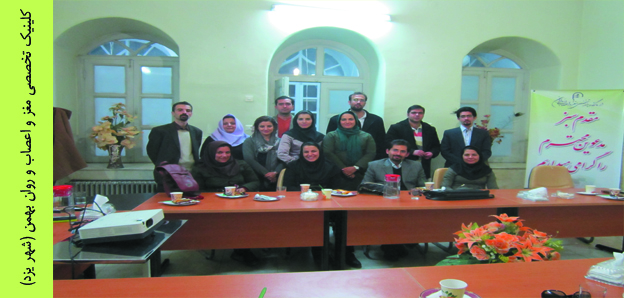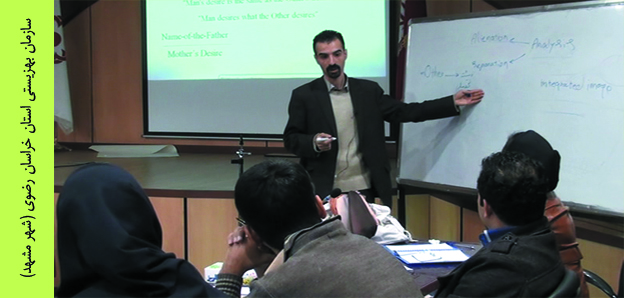مقیاس تعارض نقش جنسیتی مردانه
|
مجله دانش و پژوهش در روانشناسی کاربردی ویژگی های روانسنجی فرم فارسی مقیاس تعارض نقش جنسیتی مهدی چمی کارپور، عباس پورشهباز، بهروز دولتشاهی، نهاله مشتاق دانشگاه علوم بهزیستی و توانبخشی گروه روانشناسی بالینی |
|
چکیده: هدف این پژوهش تعیین اعتبار و ساختار عاملی فرم فارسی مقیاس تعارض نقش جنسیتی است. جامعه آماری تحقیق شامل تمامی دانشجویان مرد دانشگاه های علوم بهزیستی و توانبخشی و دانشگاه تهران درسال 1389 بود، که از بین آنها 190 نفر در محدوه سنی 21 تا 40 سال و با سطوح تحصیلی کارشناسی تا دکترا، به عنوان نمونه تحقیق انتخاب گردیدند و پرسشنامه های ویژگی های جمعیت شناختی و فرم فارسی مقیاس تعارض نقش جنسیتی (ا. نیل و همکاران، 1986) را تکمیل کردند. تحلیل های آماری با استفاده از نرم افزار SPSS 11.5 صورت گرفت. ضرایب همبستگی پیرسون نشان داد که بین عامل های تعارض نقش جنسیتی، عامل "هیجان پذیری محدود" قوی ترین (0.01›p) و عامل "موفقیت، قدرت، رقابت" ضعیف ترین همبستگی (0.01›p) را با کل مقیاس دارند. نتایج حاصل از این مطالعه نشان دادند که فرم فارسی مقیاس تعارض نقش جنسیتی و چهار عامل آن از اعتبار خوبی (با ضرایب آلفای کرونباخ از 0.70 تا 0.81) در جمعیت دانشجویی ایران برخوردارند. همچنین، تحلیل عاملی تائیدی صورت گرفته بر روی گویه های پرسشنامه با استفاده از چرخش واریمکس، ساختار چهار عاملی این مقیاس در مطالعه حاضر را تائید نمود (مجذور کای=2029.147، درجه آزادی=666، ارزش P= 0.000). کلمات کلیدی: مقیاس تعارض نقش جنسیتی، روایی، اعتبار |
|
Iranian Journal of Knowledge & Research in Applied Psychology Psychometric Properties of the Persian Version Gender Role Conflict Scale (GRCS) Mehdi Chamikarpour, Abbas Pourshahbaz, Behrouz Dolatshahee, Nahaleh Moshtagh University of Social Welfare and Rehabilitation Sciences Department of Clinical Psychology |
|
Abstract: This study was planned to determine the reliability and construct validity of the Persian version of the gender role conflict scale. Statistical population of the study includes all male students of the universities of social welfare and rehabilitation sciences and Tehran University in 2010. 190 male students, ages ranging from 21 to 40 years old with educational levels from B.S to Ph.D were selected. They completed an inventory including demographic variables and Persian version of the gender role conflict scale. Statistical analyses were conducted using SPSS (11.5). Pearson correlation coefficients showed that the “restrictive emotionality”, among four factors of gender role conflict, had the greatest correlation with GRCS total score (P<0.01); and “success, power and competition” had the weakest one (P<0.01). Also, results from the present study showed that the Persian version of the gender role conflict scale and its four factors had a good reliability (with Chronbach’s alphas ranging from 0.70 to 0.81) among Iranian college students. Finally, four-factor structure of the Persian version of the gender role conflict scale was justified in the present study through confirmatory factor analysis with varimax rotation (K2=2029.147, df=666, & P=0.000). Key Words:Gender Role Conflict Scale, Reliability, Validity |
|
ارجاع دهی: چمی کارپور، م.، پورشهباز، ع.، دولتشاهی، ب.، مشتاق، ن. ویژگیهای روانسنجی فرم فارسی مقیاس تعارض نقش جنسیتی. دانش و پژوهش در روانشناسی کاربردی –(1) 13، بهار 1391، ص 49-60 |
|
Citation: Chamikarpour, M., Pourshahbaz, A., Dolatshahee, B., Moshtagh, N. (2012). Psychometric Properties of Persian Form of Gender Role Conflict Scale (GRCS). Iranian Journal of Knowledge & Research in Applied Psychology, 13(1), 49-60 |










